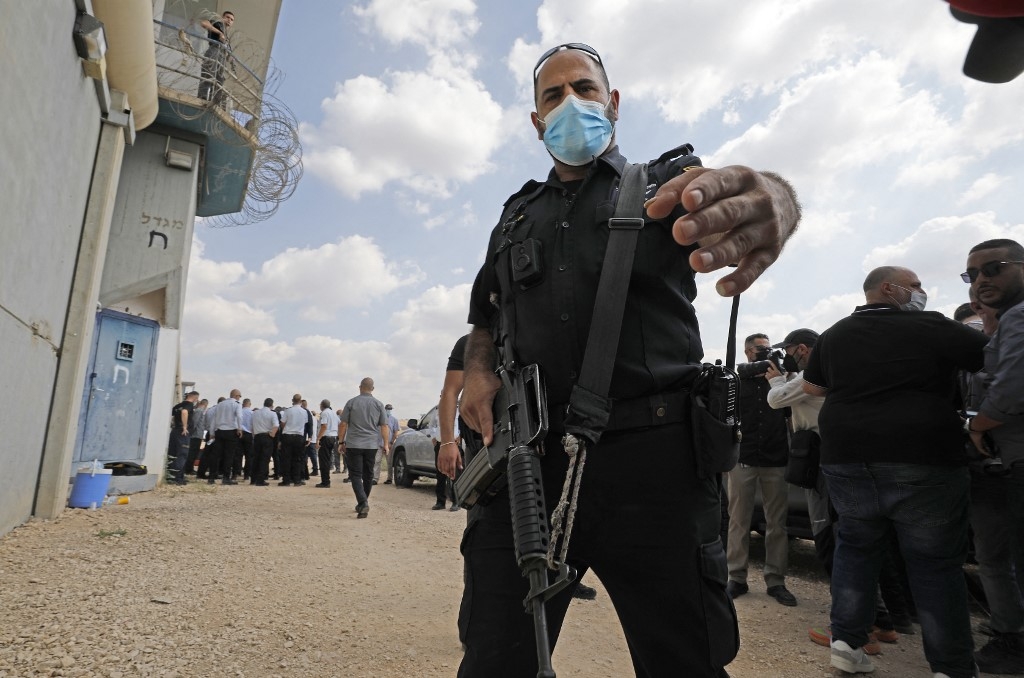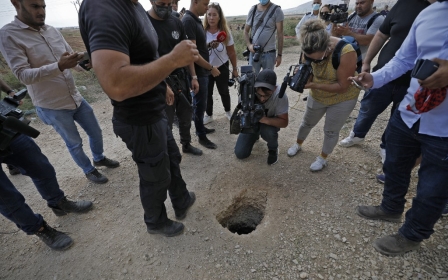Inside Gilboa, the Israeli prison thought to be more secure than a bank safe

Gilboa prison, the site of a daring jail-break by six Palestinian political prisoners on Monday morning, was once declared the most guarded prison in Israel. It was a fortress from which no one could escape.
In fact, days before it opened in June 2004, during the second Palestinian intifada, an official in the Israel Prison Service (IPS) said that Gilboa was "more secure than the Bank of Israel's safes".
Located in the Beit Shean valley, 4km north of the occupied West Bank and 14km west of Israel's fence with Jordan, Gilboa prison sits on the site of a former Ottoman lodge and a onetime British military base.
In the 1950s, Israel transformed the structures into Shata prison, expanding them to include Gilboa prison nearby in 2004.
Gilboa's cells weigh 66 tonnes - almost three times as much as a standard cell - and are made of reinforced concrete. This is why both Palestinian prisoners and Israeli security officers refer to the prison as "the Safe".
In each cell, there are eight beds. Prisoners have the bare minimum in terms of facilities: a shower, a toilet, a fan, a hot plate and a kettle, some of which can be confiscated by the Israeli guards as a form of collective punishment.
But the Safe's reputation hasn't stopped inmates from trying to escape. In August 2014, IPS uncovered a tunnel dug from a toilet cubicle in Gilboa, where eight Palestinian prisoners belonging to the Islamic Jihad group were detained.
The prisoners had dug three to five metres below a squat toilet floor to break through the cell structure. However, the attempt was thwarted following intelligence gathering, and the prisoners could not get beyond a rebar metal floor built inside the structure of the cell.
Gilboa 2021 redemption
In the pre-dawn hours of Monday morning, five members of Islamic Jihad and a member of Fatah's al-Aqsa Martyrs Brigades escaped the "unbreakable safe" of Gilboa through a hole dug in the floor of their cell toilet, reaching a gap under the prison building.
This gap, described on Monday by Israel's Northern District commander Shimon Lavi as a "structural flaw," does not require digging or removing large quantities of sand and soil, as each cell rests on concrete pillars, allowing a passageway to run underneath.
In a scene reminiscent of beloved 1994 Hollywood drama The Shawshank Redemption, Israeli media reported that the prisoners then exited through a shaft tunnel into a road at the southern end of Gilboa prison.
Israeli forces are on a manhunt, believing that the prisoners might cross the Jordanian border or reach the West Bank.
Gilboa prison is a high-security detention centre where almost 400 people with long prison sentences are confined.
It has five separate sections connected by a "pipe" shaped corridor, from which nothing can be seen at either end. In each section, there are 15 cells arranged in an H shape, and in its centre, prisoners are allowed to walk twice a day for two hours at a time.
An IPS official said the outside world was blocked from the sight of prisoners as a way of stopping them from imagining where the prison is located, and "what terrorist acts can be carried out".
When it was opened, the prison was equipped with 72 surveillance cameras, its cell doors' opening and closing functions were linked to a computer, the doors to the guards' rooms were made of heavy iron and its high wall, which surrounds the complex, was topped with heavy barbed wire.
Palestinian prisoners are constantly watched, are not allowed mobile phones or even stainless steel spoons, and their cells don't have a window through which to see the outside world.
The Gilboa prison break was hailed by Palestinian factions across the board, and celebratory gunfire was heard in Palestinian towns.
This article is available in French on Middle East Eye French edition.
Middle East Eye delivers independent and unrivalled coverage and analysis of the Middle East, North Africa and beyond. To learn more about republishing this content and the associated fees, please fill out this form. More about MEE can be found here.






